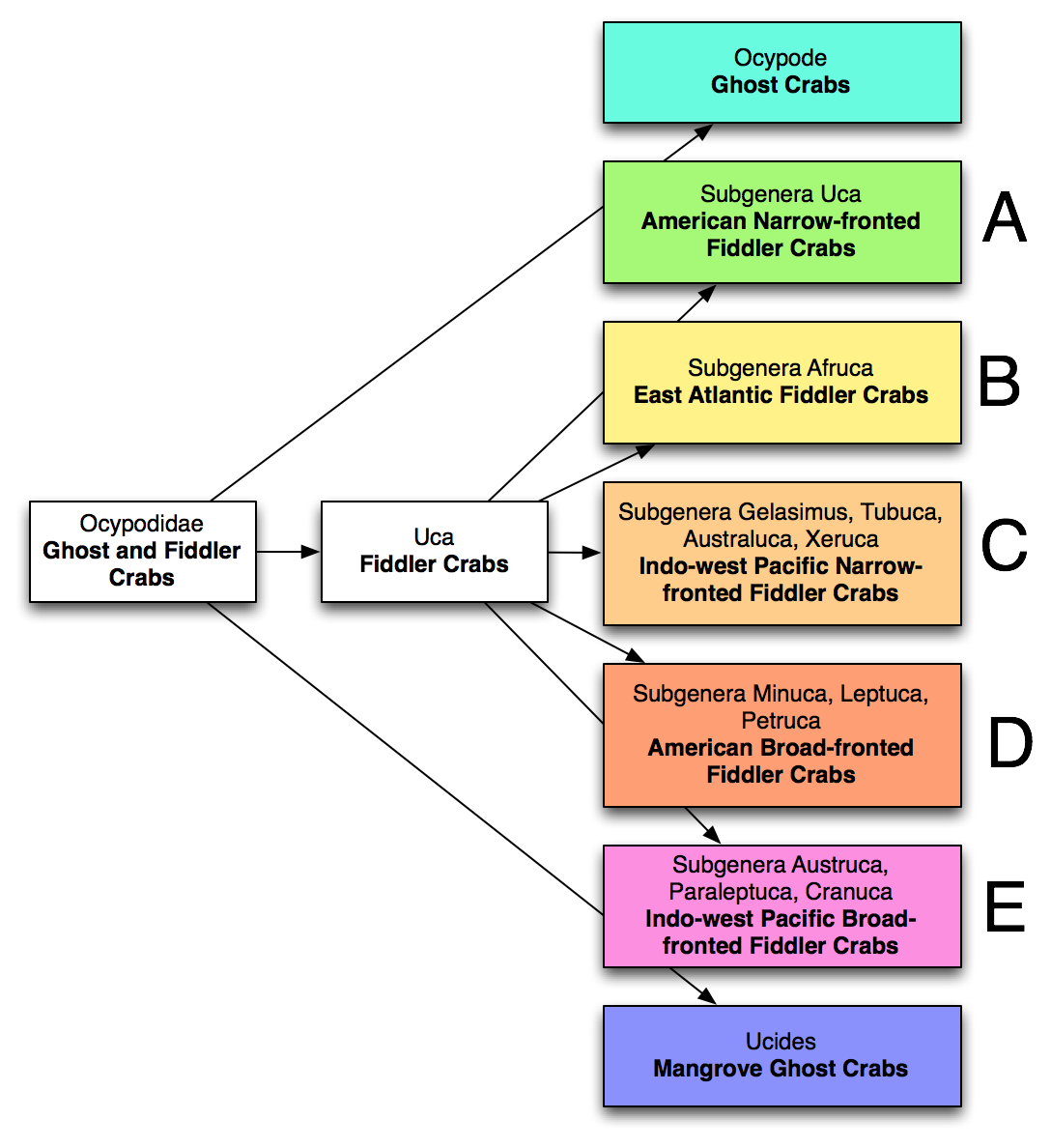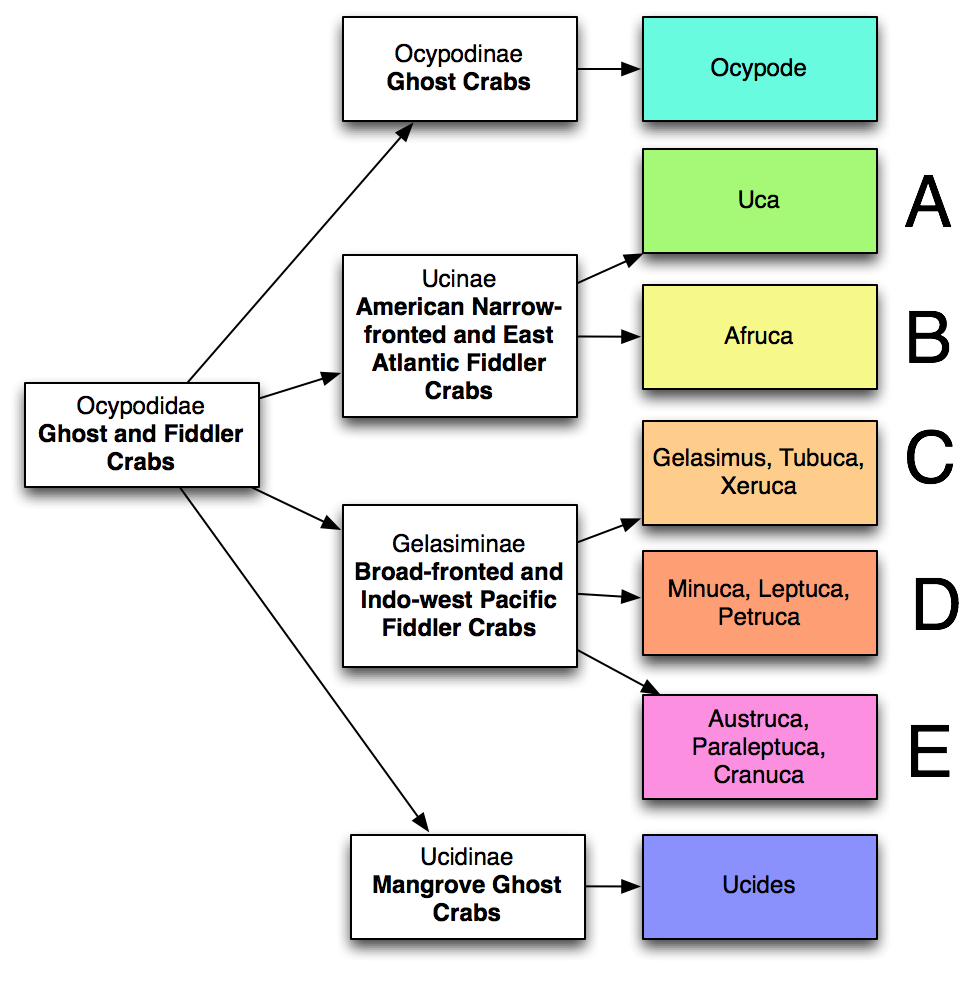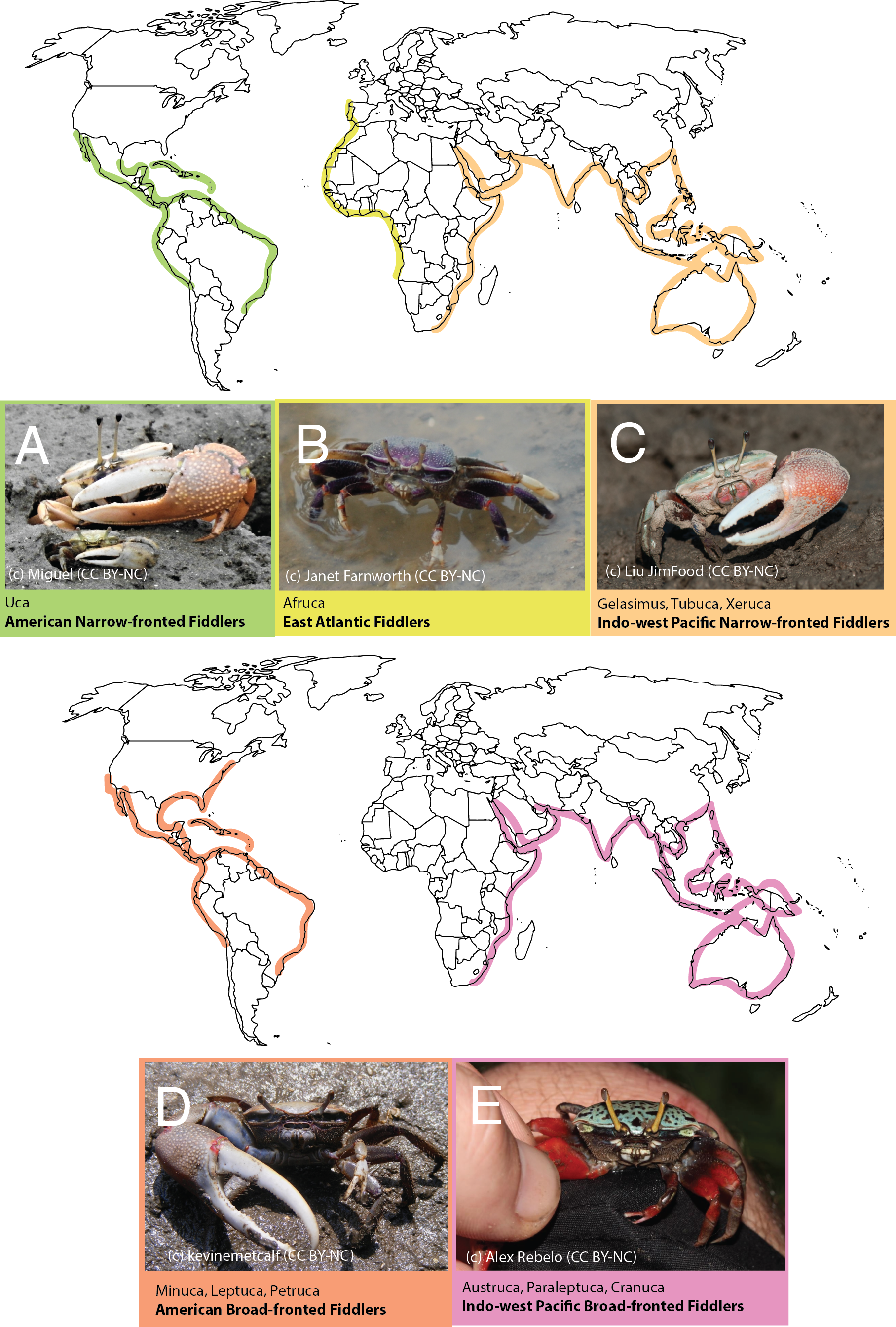iNaturalist's policy is to follow WoRMs for marine species taxonomy. Unfortunately, this has resulted in a recent disruption of the familiar Fiddler Crab genus Uca.
Since curators had already begun swapping Fiddler Crab species with the new names in WoRMs, I've taken it upon myself to finish up these ongoing taxonomic changes in the interest of consistency. I have to note that I'm not really a supporter of these changes since our key source of Fiddler Crab expertise on iNaturalist @msr (aka the author of www.fiddlercrab.info) is not on board with them, but I'm just following the existing WoRMs policy and recommend that if we want to make an exception and deviate from WoRMs we should have that discussion first.
Nevertheless, to help alleviate all the confusion that these changes have precipitated, I thought I'd write this little post to try to explain them as best as I can. Traditionally, the Ghost and Fiddler Crab family Ocypodidae had three genera:
- the Ghost Crabs Ocypode (sometimes with one species split off as Hoplocypode)
- the Mangrove Ghost Crabs Ucides (2 American species sometimes placed in their own family Ucididae)
- the Fiddler Crabs as a single genus Uca (as on www.fiddlercrab.info)
This traditional treatment divides the genus up into 12 subgenera which can be coarsely grouped based on geography and morphology into the American Narrow-fronted Fiddler Crabs, the East Atlantic Fiddler Crabs, the Indo-west Pacific Narrow-fronted Fiddler Crabs, the American Broad-fronted Fiddler Crabs, and the Indo-west Pacific Broad-fronted Fiddler Crabs.

A 2016 study by Shih et al. found that the Fiddler Crabs were paraphyletic - that is the Ghost Crabs are nested within the Fiddler Crabs. Assuming their finding is correct, this means that in order ensure that our taxonomy reflects evolutionary history we must either lump Ghost Crabs into Fiddler Crabs or split Fiddler Crabs up. They opted to do the latter. Shih et al's approach was to elevate all the traditional Fiddler crab subgenera to generic status (except Australuca which they lumped into Tubuca). The Broad-fronted and Indo-west Pacific Narrow Fronted Fiddler Crabs were grouped into the family Gelasiminae and the American Narrow-fronted and East Atlantic Fiddler Crabs were grouped into the subfamily Ucinae (technically Shih and all put these in with Ghost Crab in the subfamily Ocypodinae but this is how WoRMs has it).

Unfortunately, a lot of observations on iNaturalist are just identified to the traditional genus Uca. Under these changes there is no longer a single node on the tree that can be used to pinpoint all fiddler crabs only. Our options are to identify them at the family level (Ocypodidae) which includes Ghost Crabs and Mangrove Ghost Crabs, or to identify them at the subfamily level which requires learning a bit more about Fiddler Crabs. Lets attempt to do that now.
Only in the Americas are both subfamilies present. The new narrower interpretation of Uca strictly refers to the American Narrow-fronts Fiddler Crabs (part of Ucinae) which as the common name suggests (these names come from Shih et al) have very narrow spaces between long eyestalks and look quite different from the American Broad-fronted Fiddler Crabs (part of Gelasiminae) in three genera with much broader spaces between relatively shorter eyestalks. Also helpful, for the most part only the Broad-fronted Fiddler Crabs make it as far north as the United States.
In the Eastern Atlantic its also very simple with the monotypic genus Afruca (part of Ucinae) being the only species present.
In the Indo-west Pacific only the subfamily Gelasiminae is present. But getting a handle on the genera is more complex. Shih et al name two groups present in the Indo-west Pacific: narrow-fronted and broad-fronted. But in my judgement the morphological differences between these groups of genera are much less pronounced than in the similarly named American groupings.

If you want to try your hand at identifying fiddler crabs 'lost' at the family level to subfamily or beyond here's some to play with.
I hope this helps. This is a very interesting group of crabs where there's a lot to be discovered and a group that naturalists tend to notice and observe. It would be a shame if the confusion caused by the WoRMs taxonomy changes made this group less accessible. I hope this post encourages everyone to take a little bit more time to at least learn the new subfamilies so we can continue to work together to document these cool little crabs.
Update: the 3 figures were updated to fix the labeling bug described by msr below








